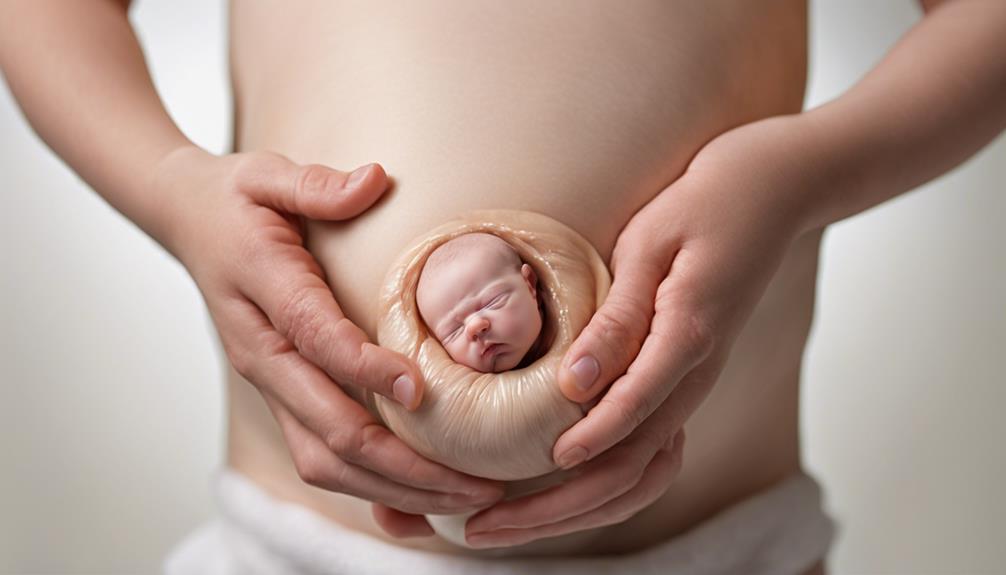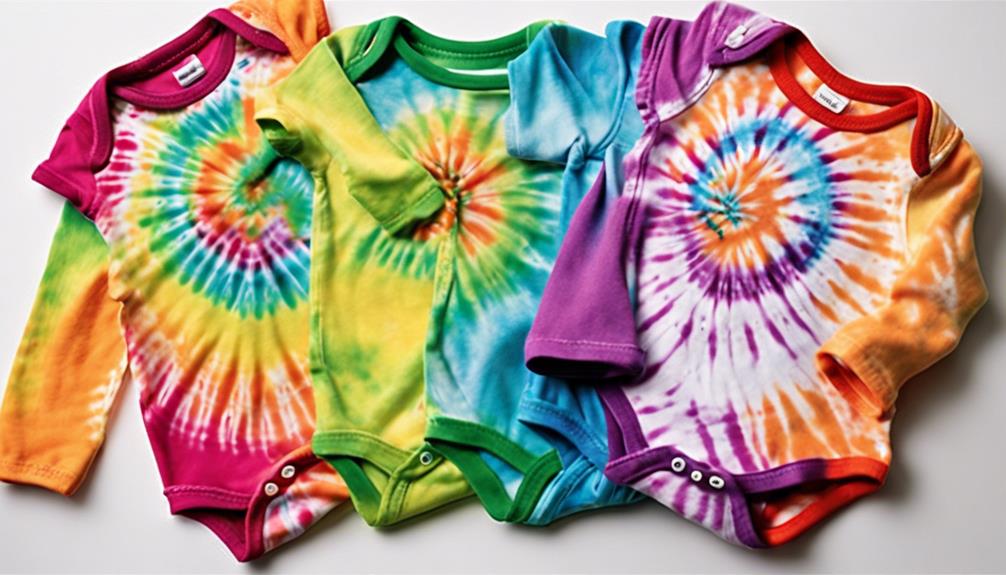Have you ever thought about what the most important steps are when it comes to caring for your newborn’s umbilical cord? Understanding the proper techniques and safety precautions can greatly benefit your baby’s well-being and contentment.
From cleaning methods to recognizing signs of infection, each aspect plays a vital role in ensuring a smooth healing process.
Stay tuned to discover the essential tips that will guide you through this important aspect of newborn care.
Key Takeaways
- Proper care prevents infections and aids in healing.
- Clean gently with warm water and mild soap, avoiding rubbing alcohol.
- Watch for signs of infection like redness, foul odor, or swelling.
- Seek medical advice if bleeding worsens or if the stump hasn't fallen off after three weeks.
Importance of Umbilical Cord Care
Ensuring proper umbilical cord care for newborns is essential for preventing infections and promoting healing. The umbilical stump, a remnant of the connection between the baby and the mother, is delicate and requires gentle attention. Keeping the stump clean and dry is important in reducing the risk of infection. By following the guidance of your healthcare provider, you can effectively care for this area and support your baby's health.
Recognizing the signs of infection is important to prevent complications. If you notice redness, swelling, or discharge around the stump, it could be an indication of an issue that requires medical attention. Prompt action can help in averting further problems and ensuring proper healing for your newborn.
Proper Cleaning and Drying Techniques
Moving from the importance of umbilical cord care, let's now address the proper cleaning and drying techniques necessary for caring for your newborn's umbilical cord stump.
When it comes to keeping your baby's umbilical cord stump clean and dry, here are some essential tips:
- Clean gently: Use warm water and mild soap if stool gets on the cord stump to prevent infection.
- Air dry: Allow the stump to air dry naturally and avoid covering it with tight clothing to promote healing.
- Use wet cotton swab: Clean any fluids around the stump with a wet cotton swab, avoiding rubbing alcohol to prevent irritation.
- Diaper placement: Fold the diaper below the cord to keep it dry and prevent any irritation or rubbing.
Signs of Infection to Watch for
What are the key signs to watch for that may indicate an infection in your newborn's umbilical cord stump? Keeping a close eye on your baby's umbilical cord area is essential for their well-being. Signs of infection in the umbilical cord stump include redness around the base, foul odor, pus or discharge, swelling, and persistent bleeding. It is crucial to seek medical assistance if you notice high fever, excessive crying, irritability, red streaks on the skin, or prolonged bleeding, as these may indicate a more severe infection. Additionally, if your baby shows poor feeding, fever, lethargy, or poor muscle tone, it could be related to an umbilical cord infection. Remember to contact your healthcare provider if you have any concerns about the umbilical cord stump, especially if it hasn't fallen off after three weeks. Prompt attention to any signs of infection or abnormalities in the umbilical cord area is vital to ensure your newborn's health and well-being.
| Signs of Infection in Umbilical Cord Stump | When to Seek Medical Help |
|---|---|
| Redness, foul odor, pus, swelling, bleeding | High fever, excessive crying, irritability, red streaks, prolonged bleeding |
| Poor feeding, fever, lethargy, muscle tone | Concerns about stump after three weeks |
Handling the Umbilical Cord Stump

As we care for our newborn's umbilical cord stump, it's important to handle it gently and avoid any pulling or picking to aid in the natural healing process and prevent infection.
Here are some essential tips to help you properly manage the umbilical cord stump:
- Allow it to Fall Off Naturally: The cord stump typically detaches on its own in 1 to 3 weeks after birth.
- Keep it Clean and Dry: Gently wipe away any discharge with a wet cotton swab to prevent infection.
- Avoid Certain Products: Don't use rubbing alcohol or powders on the cord stump as they can hinder the healing process.
- Monitor for Infection Signs: Watch out for redness, swelling, foul odor, or discharge from the stump. If you notice any of these signs, seek medical attention promptly.
When to Seek Medical Advice
If you notice persistent or worsening bleeding from your newborn's umbilical stump after three days, it's important to contact a healthcare professional for guidance and evaluation. Additionally, if you observe thick yellow fluid oozing from the umbilical area or notice any signs of infection such as redness, tenderness, swelling, or a foul smell around the umbilical stump, seeking medical advice is vital. Keep an eye out for symptoms like fever, tiredness, or poor feeding in your newborn, as these could indicate an infection requiring prompt attention from a healthcare provider.
Furthermore, if your baby's umbilical stump hasn't fallen off after three weeks, it's advisable to reach out to a healthcare professional for further evaluation and possible intervention. Your baby's health and well-being are our top priorities, so don't hesitate to seek medical advice if you have any concerns regarding their umbilical cord stump. Your healthcare provider is there to support you and your newborn through any challenges that may arise.
Frequently Asked Questions
What Is the Proper Care for Umbilical Cords of Newborns?
We keep the umbilical cord stump clean by gently wiping it with warm water and a soft cloth. It's crucial to make sure it stays dry and exposed to air for healing. Avoid rubbing alcohol or powders.
What Do You Put on a Baby's Belly Button After the Cord Falls Off?
After the cord falls off, we keep the baby's belly button area clean and dry. If discharge is present, we gently clean with mild soap and water. Avoid powders, oils, or lotions. If infection signs appear, contact healthcare.
How Many Times Should I Clean My Baby's Umbilical Cord?
We clean our baby's umbilical cord stump 2-3 times a day with warm water and gentle soap. It's essential to keep it dry and watch for signs of infection like redness or foul smell.
How Long Should Umbilical Cord Stay on Newborn?
Oh, it's important to let the umbilical cord stay on a newborn until it falls off naturally, typically within 1 to 3 weeks. Premature removal can lead to complications. Always keep it clean and dry.
Conclusion
In caring for your newborn's umbilical cord, remember to keep it clean and dry, watch for signs of infection, and handle it gently. By following these vital tips, you can guarantee your baby's well-being during those critical first weeks.
Just like a delicate flower, your little one's umbilical cord needs gentle care to blossom into a healthy start in life. Stay informed, stay attentive, and watch your baby thrive.










